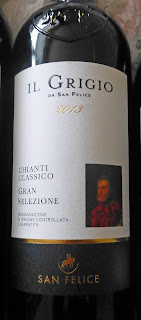A duo of characterful wines, one from the unique Corbieres terroir, the other from the prolific Rhone.
 |
| A Rhone village |
Château de Bastet “Aeris” Côtes du Rhone 2019, 13%,
RRP €17.95-€18.25. The Grainey, Scarriff//
Taste, Castletownbere// The Olive Branch, Clonakilty// Mary Pawle
Aeris, from Avignon, is a Biodynamic Rhone white made from (mostly) a blend of Marsanne, Rousanne, Grenache Blanc and Viognier grapes. It has a pale straw yellow colour. Aromas are not the strongest but are not delicate either, beautiful and inviting floral scents and ripe fruit too. Initial sip makes a tart impression but soon the fruit (citrus and apricot and exotic too) asserts itself all the way through to a fresh finish.
Generally, white Côtes du Rhone have a clear and crisp appearance, with a floral and fruit bouquet and a well balanced palate. This “Aeris”, organic and biodynamic, certainly fits that description. Serve at 9 to 11 degrees and you’ll find it is the perfect match to grilled fish, shellfish, fish stew and goat cheeses. Would be a good match too with a vegetable tart or with a chicken dishes. Salade Nicoise too. Pretty versatile.
Château de Bastet lies on the outskirts of Sabran, a village in the Gard region 45 km west of Nîmes and 35 km north of Avignon. The story of Château de Bastet is one of family traditions and a profound love of this land, a passion reflected in the wines made here. Welcome to a truly unique winemaking estate where past, present and future are united under the banner of biodynamic agriculture, a cohesive combination of traditional craftsmanship and the Art of Living.
Highly Recommended and, by the way, well priced. Aeris is one of a trio in the winery’s four elements series. The others are Terram (a fruity red C-d-R) and Ignis (an intense red C-d-R). Don’t think they have a fourth on offer. Might not be appropriate to call a wine Aqua!
Sainte Croix Pourboire Nature 2018, 13%RRP €18.50-€19: Little Green Grocer,Kilkenny// Organico, Bantry// The Connemara Hamper, Clifden.
As usual, the Sainte Croix label tells you most of what you need to know about the wine in the bottle. This is the story of this one: terroir - hautes Corbières - limestone - Carignan - delicious fresh fruit - living soils - soft tannins - wild herbs - passion - wine without compromise.
Colour is a deep red with purple hints. Crushed blackcurrant leads the aromatics and there’s a floral presence as well and more than a hint of outdoor freshness, perhaps from the local garrigue (popping and cracking in a hot summer). And that melange of fruit and floral, matched by a fresh acidity, all born and bred in the unique Corbieres terroir, makes for a superb palate. Tannins are featherlight, barely a tickle, and the finish is long and satisfying. Very Highly Recommended.
Saint Croix tell us there is nothing added. “Nothing, ie no SO2, yeast, tannins, enzymes, fining products etc etc. A red that remains very close to black fruits and garrigue herbs. From the Free Electron Series. Fermentation in vats at 23-26°C for 15 days, with indigenous yeasts and without input. On fine lees in vats for 6 months; breeding without SO2. Bottled without SO2.”
Sainte Croix in the Languedoc is owned and run by the English husband and wife team of Jon and Elizabeth Bowen, who have extensive experience of working both in classic French stone ‘caves’ and giant, steel wineries in many parts of the world. From first sight of the unique geology and ‘climat’ here, professional intuition made it clear that it is an area of immense potential, a potential they consistently realise in their wines and illustrated well in this lovely wine, a blend of 80% Carignan and 20% Grenache.
Most of the world’s Carignan is grown in the south of France, both in the Languedoc and in neighbouring Côtes Catalanes. Surprisingly, former French colonies Tunisia and Algeria come second and third. While the fruit may have been grown in the Corbieres, it doesn’t get the AOC and is labelled simply as a Vin De France. A rather superb one though!
I read that Wine Folly recommends Carignan as an “amazing choice for Thanksgiving and holiday fare” as it works well with cinnamon spiced dishes, berry based sauces and smoky meats.






















